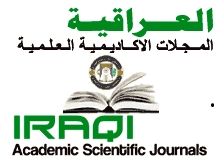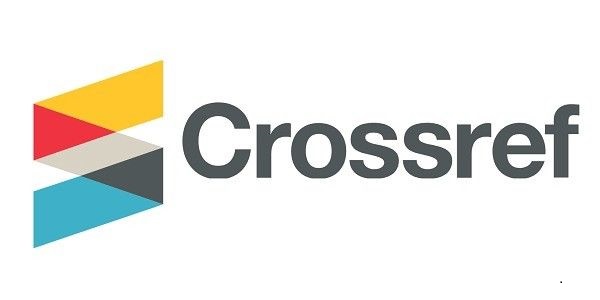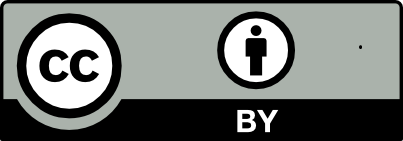Anticancer Potential of Citrullus colocynthis Oil to enhanced suppression human glioblastoma AMGM-5 cell line
DOI:
https://doi.org/10.56714/bjrs.50.2.13Keywords:
Cytotoxicity, Cell migration, Human glioblastoma, Cancer cell lines, Apoptosos, Wound healing assay, Medicinal plants, Anticancer therapy, Cancer cells invationAbstract
With continuously rising morbidity and mortality, the scientists focus their efforts to outcome novel therapeutics due to improve cancer patients’ survival. The major undesirable features of conventional therapies were low selectivity, high toxicity, drug resistance, and economic expenses. Opposite, natural compounds of medicinal plants play a crucial role in treatment of several diseases. Currently, many studies investigated the potential of secondary metabolites to fight cancer cells through enhanced apoptotic cell death or energy production pathway as a targeted and smart therapy strategies. The study aimed to evaluate and investigate of antitumor activity of Citrullus colocynthis fruit oil extraction against cancer and normal cell lines. AMGM-5 human glioblastoma and HBL-100 human breast epithelial cells were used to determination cytotoxic effect of C.colocynthis oil by MTT assay and detection of IC50 dose. Furthermore, this study evaluated apoptosis using fluorescent staining. In addition, we investigated of cell migration, invasion, and rapid rate proliferation of cancer cells by wound healing assay. The results showed significant impacts of essential oil accompanied by toxicity, apoptosis, and inhibition of cell proliferation, migration, and invasion against cancer cells, but, normal cells not affected. Our findings suggest natural compounds have possible cancer drugs without side effect on normal cells.
Downloads
References
R.L. Siegel, K.D. Miller, N.S. Wagle, and A. Jemal, “Cancer statistics,” CA: a cancer journal for clinicians, vol. 73, pp.17-48, 2023. https://doi.org/10.3322/caac.21763
R. Bernards, E. Jaffee, J.A. Joyce, S.W. Lowe, E.R. Mardis, and S.J. Morrison, et al., “A roadmap for the next decade in cancer research,” Nature Cancer, vol. 1, pp. 12-17, 2020. Doi: https://doi.org/10.1038/s43018-019-0015-9.
K. Saginala, A. Barsouk, J.S. Aluru, P. Rawla, S.A. Padala, and A. Barsouk, “Epidemiology of bladder cancer,” Medical sciences, vol. 8, pp. 15, 2020. Doi: https://doi.org/10.3390/medsci8010015
J.J. Mao, G.G. Pillai, C.J. Andrade, J.A. Ligibel, P. Basu, and L. Cohen, et al., “Integrative oncology: Addressing the global challenges of cancer prevention and treatment,” CA: A Cancer Journal for Clinicians, vol. 72, pp. 144-164, 2022. Doi: https://doi.org/10.3322/caac.21706
F. Daneshimehr, Z. Barabadi, S. Abdolahi, M. Soleimani, J. Verdi, and S. Ebrahimi-Barough, et al., “Angiogenesis and its targeting in glioblastoma with focus on clinical approaches,” Cell Journal (Yakhteh), vol. 24, pp. 555, 2022. Doi: https://doi.org/10.22074/cellj.2022.8154.
K. Bukowski, M. Kciuk, and R. Kontek, “Mechanisms of multidrug resistance in cancer chemotherapy,” International journal of molecular sciences, vol. 21, pp. 3233, 2020. Doi: https://doi.org/10.3390/ijms21093233.
L. Bustos, C. Echiburú-Chau, A. Castro-Alvarez, B. Bradshaw, M.J. Simirgiotis, and M. Mellado, et al., “Cytotoxic effects on breast cancer cell lines of chalcones derived from a natural precursor and their molecular docking analysis,” Molecules, vol. 27, pp. 4387, 2022. Doi: https://doi.org/10.3390/molecules27144387.
D.T. Debela, S.G. Muzazu, K.D. Heraro, M.T. Ndalama, B.W. Mesele, and D.C. Haile, et al., “New approaches and procedures for cancer treatment: Current perspectives,” SAGE open medicine, vol. 9, 2021. Doi: https://doi.org/10.1177/20503121211034366.
C. Bailly, X. Thuru, and B. Quesnel, “Combined cytotoxic chemotherapy and immunotherapy of cancer: modern times,” NAR cancer, vol. 2, pp. zcaa002, 2020. Doi: https://doi.org/10.1093/narcan/zcaa002.
A. Naeem, P. Hu, M. Yang, J. Zhang, Y. Liu, and W. Zhu, et al., “Natural products as anticancer agents: current status and future perspectives,” Molecules, vol. 27, pp. 8367, 2022. Doi: https://doi.org/10.3390/molecules27238367.
K. von Schwarzenberg and A.M. Vollmar, “Targeting apoptosis pathways by natural compounds in cancer: Marine compounds as lead structures and chemical tools for cancer therapy,” Cancer letters, vol. 332, pp. 295-303, 2013. Doi: https://doi.org/10.1016/j.canlet.2010.07.004.
T. Khan, M. Ali, A. Khan, P. Nisar, S.A. Jan, and S. Afridi, et al., “Anticancer plants: A review of the active phytochemicals, applications in animal models, and regulatory aspects,” Biomolecules, vol. 10, pp. 47, 2019. Doi: https://doi.org/10.3390/biom10010047.
A. Najmi, S.A. Javed, M. Al Bratty, and H.A. Alhazmi, “Modern approaches in the discovery and development of plant-based natural products and their analogues as potential therapeutic agents,” Molecules, vol. 27, pp. 349, 2022. Doi: https://doi.org/10.3390/molecules27020349.
F. Majolo, L.K.D.O.B. Delwing, D.J. Marmitt, I.C. Bustamante-Filho, and M.I. Goettert, “Medicinal plants and bioactive natural compounds for cancer treatment: Important advances for drug discovery,” Phytochemistry Letters, vol. 31, pp. 196-207, 2019. Doi: https://doi.org/10.1016/j.phytol.2019.04.003.
H. Ekiert, J. Pajor, P. Klin, A. Rzepiela, H. Ślesak, and A. Szopa, “Significance of Artemisia vulgaris L.(Common Mugwort) in the history of medicine and its possible contemporary applications substantiated by phytochemical and pharmacological studies,” Molecules, vol. 25, pp. 4415, 2020. Doi: https://doi.org/10.3390/molecules25194415.
A. Ullah, S. Munir, S.L. Badshah, N. Khan, L. Ghani, and B.G. Poulson, et al., “Important flavonoids and their role as a therapeutic agent,” Molecules, vol. 25, pp. 5243, 2020. Doi: https://doi.org/10.3390/molecules25225243.
M. Swetha, C.K. Keerthana, T.P. Rayginia, and R.J. Anto, “Cancer chemoprevention: A strategic approach using phytochemicals,” Frontiers in Pharmacology, vol. 12, pp. 809308, 2022. Doi: https://doi.org/10.3389/fphar.2021.809308.
Q.Y. Li, M. Munawar, M. Saeed, J.Q. Shen, M.S. Khan, and S. Noreen, et al., “Citrullus colocynthis (L.) Schrad (Bitter Apple Fruit): Promising traditional uses, pharmacological effects, aspects, and potential applications,” Frontiers in Pharmacology, vol. 12, pp. 791049, 2022. Doi: https://doi.org/10.3389/fphar.2021.791049.
Y.M. Mandour, E. Refaat, and H.D. Hassanein, “Anticancer activity, phytochemical investigation and molecular docking insights of Citrullus colocynthis (L.) fruits,” Scientific Reports, vol. 13, pp. 20038, 2023. Doi: https://doi.org/10.1038/s41598-023-46867-6.
U.A. Attar, and S.G. Ghane, “Optimized extraction of anti-cancer compound–cucurbitacin I and LC–MS identification of major metabolites from wild Bottle gourd (Lagenaria siceraria (Molina) Standl.),” South African Journal of Botany, vol. 119, pp. 181-187, 2018. Doi: https://doi.org/10.1016/j.sajb.2018.09.006.
A.L. Hussain, H.A. Rathore, M.Z. Sattar, S.A. Chatha, S.D. Sarker, and A.H. Gilani, “Citrullus colocynthis (L.) Schrad (bitter apple fruit): A review of its phytochemistry, pharmacology, traditional uses and nutritional potential,” Journal of ethnopharmacology, vol. 155, pp. 54-66, 2014. Doi: https://doi.org/10.1016/j.jep.2014.06.011.
M. Khan, M. Khan, K. Al-Hamoud, S.F. Adil, M.R. Shaik, and H.Z. Alkhathlan, “Diversity of Citrullus colocynthis (L.) Schrad seeds extracts: Detailed chemical profiling and evaluation of their medicinal properties,” Plants, vol. 12, pp. 567, 2023. Doi: https://doi.org/10.3390/plants12030567.
M. Mazher, M. Ishtiaq, W. Mushtaq, M. Maqbool, N. Zahid, and T. Husain, “Comprehensive review of phytochemistry and bioactivities of Citrullus colocynthis (L.) Schrad,” Pharm. Res, vol. 4, pp. 486, 2020. Doi: https://doi.org/10.23880/oajpr-16000218.
S. Perveen, H. Ashfaq, S. Ambreen, I. Ashfaq, Z. Kanwal, and A. Tayyeb, “Methanolic extract of Citrullus colocynthis suppresses growth and proliferation of breast cancer cells through regulation of cell cycle,” Saudi Journal of Biological Sciences, vol. 28, pp. 879-886, 2021. Doi: https://doi.org/10.1016/j.sjbs.2020.11.029.
F. Darabi, H. Hassanpour, P. Maghami, S. Mohebbi, and S. Arabzadeh, “Induction of Bax and Caspase-3 Genes Ex-pression by Simultaneous Administration of Phycocyanin and Citrullus Colocynthis Extract in Human Colorectal Cell Line (HT-29),” Personalized Medicine Journal, vol. 6, pp. 17-24, 2021. Doi: http://dx.doi.org/10.22034/pmj.2021.249038.
S. Jayachandran, P. Santhakumar, S. Jayaraman, and G. Sridevi, “Effect of Citrullus colocynth fruit extract on pro and anti-apoptotic molecules in human melanoma cell line (A375),” Bioinformation, vol. 18, pp. 299, 2022. Doi: https://doi.org/10.6026/97320630018299.
I.A. Shaikh, A.M. Alshabi, S.A. Alkahtani, M.A. Orabi, B.A. Abdel-Wahab, and I.A. Walbi, et al., “Apoptotic cell death via activation of DNA degradation, caspase-3 activity, and suppression of Bcl-2 activity: an evidence-based Citrullus colocynthis cytotoxicity mechanism toward MCF-7 and A549 cancer cell lines,” Separations, vol. 9, pp. 411, 2022. Doi: https://doi.org/10.3390/separations9120411.
S.E.N. Ayyad, A. Abdel-Lateff, W.M. Alarif, F.R. Patac-chioli, F.A. Badria, and S.T. Ezmirly, “In vitro and in vivo study of cucurbitacins-type triterpene glucoside from Cit-rullus colocynthis growing in Saudi Arabia against hepatocellular carcinoma,” Environmental toxicology and pharmacology, vol. 33, pp. 245-251, 2012. Doi: https://doi.org/10.1016/j.etap.2011.12.010.
R.A. Abo-Altemen, A.M. Al-Shammari, and M.S. Shawkat, “GC-MS analysis and chemical composition identification of Cyperus rotundus L. from Iraq,” Energy Procedia, vol. 157, pp. 1462-1474, 2019. Doi: https://doi.org/10.1016/j.egypro.2018.11.311.
O. Elkabets, B. Neumark, and A. Amirav, “Fast saliva analysis by GC–MS with Cold EI and Open Probe Fast GC–MS with Cold EI for the detection of cannabis usage,” Journal of Mass Spectrometry, vol. 58, pp. e4981, 2023. Doi: https://doi.org/10.1002/jms.4981.
A.A. Al-Ali, K.A. Alsalami, and A.M. Athbi, “Cytotoxic effects of CeO2 NPs and β-Carotene and their ability to induce apoptosis in human breast normal and cancer cell lines,” Iraqi Journal of Science, pp. 923-937, 2022. Doi: https://doi.org/10.24996/ijs.2022.63.3.2.
S.M. Falih, S.T. Al-Saray, A.A. Alfaris, and A.A. Al-Ali, “The synergistic effect of eucalyptus oil and retinoic acid on human esophagus cancer cell line SK-GT-4,” Egyptian Journal of Medical Human Genetics, vol. 23, pp. 70, 2022. Doi: https://doi.org/10.1186/s43042-022-00259-z.
M.H. Sangour, I.M. Ali, Z.W. Atwan, and A.A.A.L.A. Al Ali, “Effect of Ag nanoparticles on viability of MCF-7 and Vero cell lines and gene expression of apoptotic genes,” Egyptian Journal of Medical Human Genetics, vol. 22, pp. 1-11, 2021. Doi: https://doi.org/10.1186/s43042-020-00120-1.
E. Peuchant, M.L. Bats, I. Moranvillier, M. Lepoivre, J. Guitton, and D. Wendum, et al., “Metastasis suppressor NM23 limits oxidative stress in mammals by preventing activation of stress‐activated protein kinases/JNKs through its nucleoside diphosphate kinase activity,” The FASEB Journal, vol. 31, pp. 1531-1546, 2017. Doi: https://doi.org/10.1096/fj.201600705r.
D. Nevozhay, “Cheburator software for automatically calculating drug inhibitory concentrations from in vitro screening assays,” PLoS One, vol. 9, pp. e106186, 2014. Doi: https://doi.org/10.1371/journal.pone.0106186.
A.G. Al-Ziaydi, A.M. Al-Shammari, M.I. Hamzah, H.S. Kadhim, and M.S. Jabir, “Hexokinase inhibition using D-Mannoheptulose enhances oncolytic newcastle disease virus-mediated killing of breast cancer cells,” Cancer Cell International, vol. 20, pp. 1-10, 2020. Doi: https://doi.org/10.1186/s12935-020-01514-2.
A. Suarez-Arnedo, F.T. Figueroa, C. Clavijo, P. Arbeláez, J.C. Cruz, and C. Muñoz-Camargo, “An image J plugin for the high throughput image analysis of in vitro scratch wound healing assays,” PloS one, vol. 15, pp. e0232565, 2020. Doi: https://doi.org/10.1371/journal.pone.0232565.
A.M. Al-Shammari, A.H. Abdullah, Z.M. Allami, and N.Y. Yaseen, “2-Deoxyglucose and Newcastle disease virus synergize to kill breast cancer cells by inhibition of glycolysis pathway through glyceraldehyde3-phosphate downregulation,” Frontiers in molecular biosciences, vol. 6, pp. 90, 2019. Doi: https://doi.org/10.3389/fmolb.2019.00090.
F.H. Thamer, and N. Thamer, “Gas chromatography–Mass spectrometry (GC-MS) profiling reveals newly described bioactive compounds in Citrullus colocynthis (L.) seeds oil extracts,” Heliyon, vol. 9, 2023. Doi: https://doi.org/10.1016/j.heliyon.2023.e16861.
M. Khan, M. Khan, K. Al-Hamoud, S.F. Adil, M.R. Shaik, and H.Z. Alkhathlan, “Diversity of Citrullus colocynthis (L.) Schrad seeds extracts: Detailed chemical profiling and evaluation of their medicinal properties,” Plants, vol. 12, pp. 567, 2023. Doi: https://doi.org/10.3390/plants12030567.
P. Sitarek, P. Rijo, C. Garcia, E. Skała, D. Kalemba, and A.J. Białas, et al., “Antibacterial, anti‐inflammatory, antioxidant, and antiproliferative properties of essential oils from hairy and normal roots of Leonurus sibiricus l. and their chemical composition,” Oxidative medicine and cellular longevity, vol. 1, pp. 7384061, 2017. Doi: https://doi.org/10.1155/2017/7384061.
Z. K. Shaheen, A. A. Al-Ali, and S. A. Al-Asadi, “Anti-cancer activity of lavender oil and Newcastle disease virus on human glioblastoma: an in vitro study,” J. Basrah Res.(Sci.), vol. 49, pp. 1-12, 2023. Doi: https://doi.org/10.56714/bjrs.49.1.1
D. Hanahan, “Hallmarks of cancer: new dimensions,” Cancer discovery, vol. 12, pp. 31-46, 2022. Doi: https://doi.org/10.1158/2159-8290.cd-21-1059.
D. Hanahan, and R.A. Weinberg, “Hallmarks of cancer: the next generation,” cell, vol. 144, pp. 646-674, 2011. Doi: https://doi.org/10.1016/j.cell.2011.02.013.

Downloads
Published
Issue
Section
License
Copyright (c) 2024 Basrah Researches Sciences

This work is licensed under a Creative Commons Attribution 4.0 International License.







